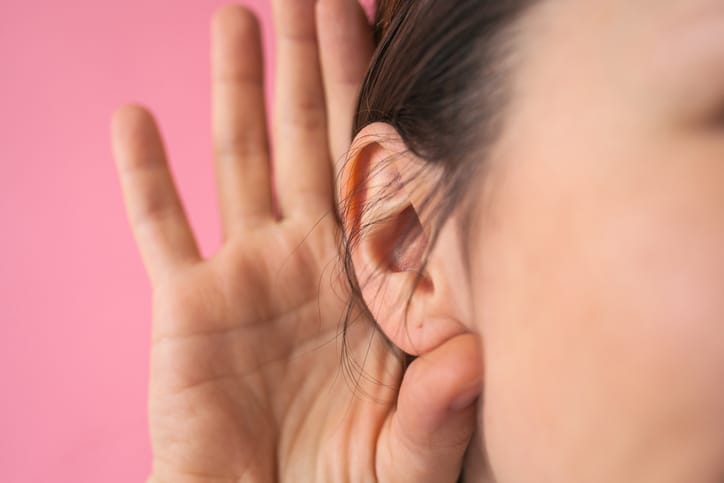What is Single Sided Deafness?

Sometimes referred to as unilateral hearing loss, single sided deafness is a condition in which an individual experiences hearing loss in only one ear but can hear normally out of the other ear. While the majority of patients with a hearing impairment suffer from bilateral (two-sided) hearing loss, SSD is diagnosed in approximately 60,000 people in the United States each year.
About one in every 1000 children is born with unilateral hearing loss and roughly three percent of school age children experience some degree of loss. Single sided deafness can impact both a child’s speech recognition and language development as well as their ability to localize sounds.
What Causes Single Sided Deafness?
SSD can be caused by a variety of factors.
One of the most common causes is acoustic neuroma, a benign, slow growing tumor that can push against the auditory nerve and affect the ability to hear properly in one ear.
Another condition commonly associated with SSD is sudden deafness, a rapid onset of hearing loss that occurs with little or no warning, often following a viral infection. Patients may develop sudden deafness as a result of an inflammation in the cochlea that causes permanent damage to the hair cells responsible for hearing.
Additional causes of SSD include:
- Trauma to the head.
- Genetic disorders.
- Meniere’s disease.
- Labyrinthitis.
- Microtia.
- Mastoiditis.
- Measles.
- Mumps.
When Should I See a Doctor?
You should seek prompt medical attention if hearing loss in one ear happens suddenly. The quicker you act, the higher chance there is for a full recovery. About 15 percent of the time sudden hearing loss can result in single sided deafness.
What Symptoms Do Those with SSD Experience?
Patients with SSD find understanding speech in the presence of background noise especially problematic and have great difficulty localizing sound (recognizing the location or origin of a sound source). Sound localization depends on subtle hearing cues from two ears; removing one from the equation confuses the brain.
Many also report experiencing a sensation known as the “head shadow” effect. High frequency sound waves do not move around objects, so they never reach the good ear as the head gets in the way. This prevents those with SSD from hearing s or t sounds.
Other symptoms include:
- Anxiety.
- Stress.
- Social isolation.
- Dizziness.
- Difficulty paying attention.
- Trouble speaking loudly.
How is SSD Diagnosed?
In order to diagnose your type of loss, your audiologist will review your symptoms and medical history before completing a physical exam.
Your doctor will then complete a comprehensive hearing exam. The tests are used to determine your exact type and degree of hearing loss.
Treatments for SSD
While there is no cure for single sided deafness, options exist to help you cope with unilateral hearing. Traditional hearing aids don’t offer much help to those suffering from SSD, but contralateral routing of signal (CROS) hearing aids can improve hearing and localization.
CROS Hearing Aids
CROS hearing aids utilize a microphone that is placed behind the impaired ear and an amplifier in the normal ear. The microphone picks up sounds and transmits them to the your “good” ear.
A similar device known as BICROS is suitable for individuals with some degree of hearing loss in one ear and total deafness in the other.
Bone Anchored Hearing Aids
Another option is a bone anchored hearing aid (BAHA), a surgically implanted device that uses direct bone conduction to transmit sounds from the affected ear to the normal one. Vibrations in the bones of the ear canal and middle ear stimulate the hair cells of the cochlea, boosting your ability to hear.
Call Hearing Aid Services of Hollywood at (323) 463-7109 for more information or to schedule your appointment today.

